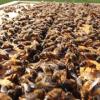- Replies 13
- Views 2.9k
- Created
- Last Reply
Popular Days
Most Popular Posts
-
my untreated fence that lasted 15 years was buried in packed clay loam, not good for drainage. I did not use gravel, but was easy to change out a post later. I see people put the fence in concrete and
-
Water is the enemy. There are other woods that might be better than pine it depends on what is more local to you area. Nothing wrong with PT pine but some is treated for above ground and not ground co




I know there are a few of you on here that live the country or construction life. I'm having a hard time deciding on what to do. I'm adamant about a garden this year. But whats stopping me is having adequate fencing to keep the deer out. I don't exactly want to spend much money on fencing to make this happen as my dollars are going out of the pocket at every angle. So I'm inquiring to great minds, to see if there is truly a solution to this.
I have MANY, many lodgepole pine logs that I have on the property. They are the PERFECT size for posts, but I cannot decide on what to do to preserve them. I do realize that they can be a poor choice in wood. They are used, though. I've seemed to have read it all about using preservatives and where to apply, etc. But truly, what is actually standing the test of time? I've heard about charring the ends, I have heard about charring the ends and applying used motor oil/diesel mix. I have heard about using just a sleeve at the ground level, wrapping the buried end with tar paper, to brushing tar on. I have read about using copper napthenate, with or without diesel or kerosene. Linseed oil, tung oil, the list goes on!
But what I don't read about is from those who have actually done something like this and have the test of time behind them to prove it. While I don't need that for total validity, it would be nice to know if its something you have to do as a procedure from say, industry standards, etc.
Currently, I'm leaning the copper napthenate route. Its about $150 for a 5-gallon pail at home depot. Does not need diluted, either. I speculate that I would need around 18 posts. The 4x4x12 posts from home depot are $13.67 a post. I guess it comes down to whats my time worth, and whether or not I can get away with only needing to coat the lower 5 feet of the poles instead of needing the whole post treated. Does anyone know if a pine post untreated above ground would last long?
I really 'am a person that likes to do something right the first time. But the addage has exceptions, to me. If I can DIY it and still get the same result for less, I usually do it. Whats everyone's opinion that has experience on this issue?